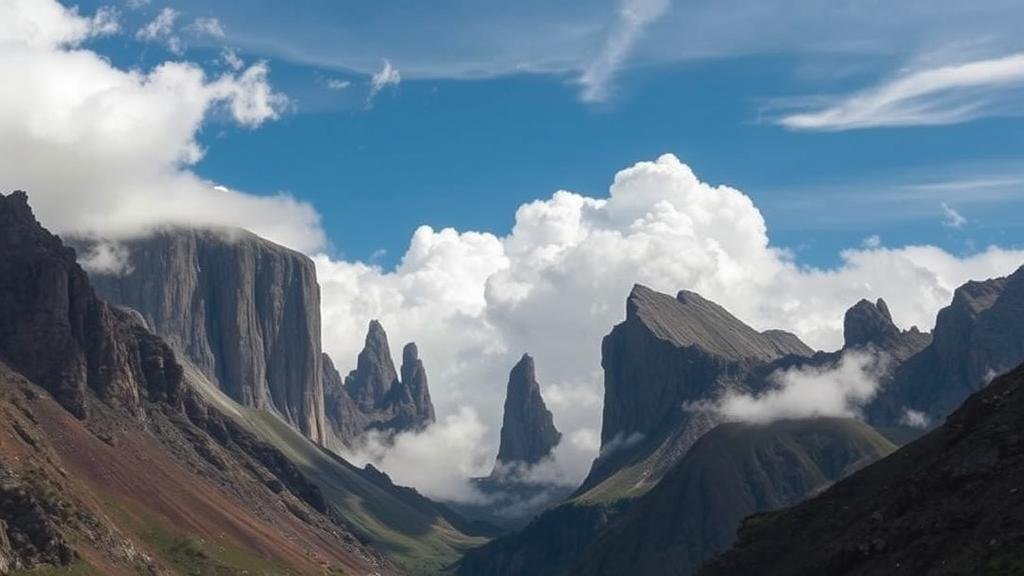Investigating the “Cloud Gates,” skyward formations in the Andes rumored to open pathways to other realms.
Investigating the Cloud Gates: Skyward Formations in the Andes
The Andes Mountains, spanning seven South American countries, have long been shrouded in mystery and lore. Among the many natural phenomena that captivate both locals and researchers alike are the enigmatic Cloud Gates. These skyward formations are rumored to serve as pathways to other realms, igniting the imagination of adventurers and scholars searching for answers. In this article, we will explore the origins, characteristics, and significance of the Cloud Gates in the Andes.
Historical Context and Cultural Significance
The Cloud Gates are often celebrated in the folklore of indigenous Andean cultures. Incas, who once inhabited this rich landscape, attributed supernatural qualities to many natural formations. The Cloud Gates, in particular, were believed to connect the physical world with the spiritual realms.
One of the most notable regions associated with the Cloud Gates is the Sacred Valley of the Incas, located near Cusco, Peru. Archaeological findings suggest that this area was a hub of worship and sacred rituals, with many structures aligned with celestial events. For example, in June 2021, researchers uncovered ceremonial sites and cave paintings that depict these formations, suggesting their role in ancient spirituality.
Physical Characteristics and Geological Formation
Visually, the Cloud Gates manifest as unique cloud formations that seem to descend from the peaks of the Andes, often swirling and taking on shapes reminiscent of arches or gates. Scientifically, these formations are a result of weather patterns interacting with the mountainous terrain.
- Temperature inversions: In higher altitudes, warm air can become trapped under cooler air, creating a phenomenon where clouds appear to cling to mountain edges.
- Wind patterns: The Andes act as a barrier, causing moisture-laden winds to rise and cool, resulting in the condensation that forms stunning cloud gates.
For example, in July 2022, meteorological data from the Andean region illustrated how localized weather systems contributed to the unprecedented formation of cloud gates in the mountains near Aconcagua, the highest peak in South America.
Legends and Myths Surrounding the Cloud Gates
The lore surrounding the Cloud Gates is rich and varied. In many indigenous cultures, these formations are thought to be gateways to the afterlife, a belief that resonates with the ancient Andean concept of duality in nature–the physical and the spiritual.
One popular legend tells of a traveler who passed through a cloud gate and returned with knowledge of the heavens, inspiring generations to explore these mystical expanses. Such narratives have been perpetuated through oral traditions, underscoring the cultural importance of the Cloud Gates in shaping identity and spirituality.
Modern-Day Exploration and Scientific Inquiry
Today, the intrigue surrounding the Cloud Gates continues to inspire both scientific inquiry and adventure tourism. Researchers are keen to investigate the interplay between geological formations and cloud dynamics to better understand these unique patterns.
In 2023, a scientific expedition was mounted in the region of Lake Titicaca to study atmospheric phenomena. Data gathered during this mission leveraged advanced remote sensing technologies to analyze the occurrence of cloud gates, yielding significant findings about their impact on regional climate patterns.
Real-World Applications of Cloud Gate Studies
The study of Cloud Gates extends beyond folklore; it has practical applications in meteorology and environmental science. Understanding these formations can lead to enhanced weather prediction models, particularly in mountainous regions where sudden weather changes are common.
- Climate monitoring: Research into cloud formations helps climatologists understand local climate shifts, which is crucial in a time of global climate change.
- Tourism impact: This knowledge also informs sustainable tourism strategies, allowing local communities to benefit economically while preserving their cultural heritage.
Conclusion: The Cloud Gates as a Nexus of Culture and Nature
The Cloud Gates of the Andes exemplify the intricate relationship between culture, mythology, and natural phenomena. As ongoing research brings new insights into these formations, we appreciate their dual significance–both as breathtaking natural spectacles and revered symbols of connection to the divine.
For adventurers and seekers of knowledge alike, exploring the Andes and its Cloud Gates offers a compelling journey into the heart of one of Earth’s most majestic ranges. Whether as a subject of scientific investigation or as the centerpiece of ancient stories, the Cloud Gates serve as a reminder that the natural world continues to inspire wonder and exploration.


